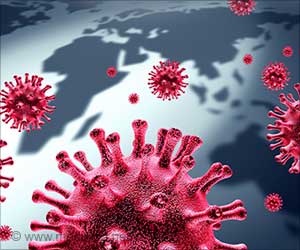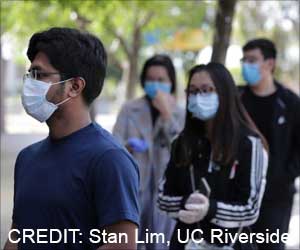SARS-CoV-2 latches on to a biological hook and infects the surface of olfactory supporting cell lining of the upper part of the nose, reports a new study.

‘Loss of the sense of smell is linked to COVID-19, generally in the absence of other nasal symptoms.’





Lane's medical practice focuses on people with nasal and sinus problems, who oftentimes, he says, lose their sense of smell — a condition called anosmia.Scientists have known that SARS-CoV-2 latches on to a biological hook on the surface of many types of human cells, called an angiotensin-converting enzyme two receptors (ACE2). The receptor reels in essential molecules.
In a bid to explore the ACE2 link to COVID-19 in more detail, Lane, Mengfei Chen, Ph.D., a research associate in Lane's lab at the Johns Hopkins University School of Medicine, and others on his team took a close look at ACE2 levels in nasal tissue specimens from 19 adult men and women with chronic rhinosinusitis (inflammation of nasal tissue) and in tissues from a control group of four people who had nasal surgeries for issues other than sinusitis.
The researchers also studied tissue samples of the trachea from seven people who underwent surgery for abnormal narrowing of the trachea. Cells from children were not examined for this study, in part because they tend to have low ACE2 levels in the cells lining the nose, which may contribute to generally less severe illness among children infected with the SARS-CoV-2 virus. None of the study participants had been diagnosed with COVID-19.
The scientists used a high-resolution imaging technique called confocal microscopy to produce very sharp images of cells lining the nasal and tracheal airways. They used fluorescent stains to identify ACE2 receptors.
Advertisement
For the study, depending on the biopsy sample, cells in the olfactory neuroepithelium had a 200-fold to 700-fold increase in ACE 2 proteins compared with other samples from the nose and trachea. Because the cells with high levels of ACE2 are associated with odor sensing, the researchers suggest that infection of these cells may be the reason some people with COVID-19 experience loss of smell.
Advertisement
Because the cells lining the nose may prove to be a key entry point for SARS-CoV-2, Lane says there may be ways to target those particular cells with topical antiviral drugs or other therapies directly to that area. The researchers plan to advance this research by investigating COVID-19-infected tissue from the noses of humans to confirm if the SARS-CoV-2 virus does indeed target support cells in the nose.
Funding for the study was provided by the National Institutes of Health's National Institute of Allergy and Infectious Diseases and National Institute on Deafness and other Communication Disorders (R01 AI132590, R01 DC016106.
Other scientists who contributed to the research include Wenjuan Shen, Nicholas Rowan, Heather Kulaga, Alexander Hillel, and Murugappan Ramanathan Jr., of Johns Hopkins.
Source-Newswise










